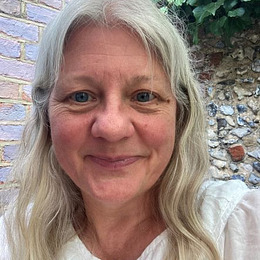The Victorian Society are calling on the public to oppose the partial demolition of George Eliot’s farmstead. Agricultural buildings associated with the childhood home of the 19th-century writer would be destroyed and replaced by an enlarged ‘replica’ housing the George Eliot Visitor Centre and Museum.

These are the outbuildings Eliot knew and she worked on the farm when her mother died. She was 16 when she became housekeeper and worked in the dairy.
The planning application is currently before Nuneaton and Bedworth Borough Council and we have until 12 March to cause the Trust to rethink their application. We encourage the public to immediately object to this planning application on this link. To find the planning application, type this reference number 040106 into the box for “Application Reference”.
The Griff Preservation Trust aim to include material from the demolished outbuildings in the new build museum. Griff House was the childhood home of Eliot. It is a two-story red brick farmhouse and was Eliot’s childhood home from 1820-1841. The outbuildings were included in an engraving in John Cross’s first biography of George Eliot in 1885. An image of what the Trust aim to build after demolition can be seen here.
George Eliot’s early work focuses on English rural life and society, her surroundings in her formative years would have influenced her view of the world and subsequently her work. The agricultural buildings servicing the farmhouse would likely have formed some of the first impressions of rural life, be it sights, smells, or sounds. The farm buildings are in a poor state of repair but re-use is a much more environmentally friendly approach than to demolish these historic buildings.
Guy Newton, Conservation Adviser, the Victorian Society said:
“In principle we naturally support the creation of a George Eliot Visitor Centre and Museum that celebrates the literary genius of one of the great 19th-century writers. However, it is crucial to get the details right to ensure harm to a designated heritage asset is mitigated. These agricultural buildings are essentially authentic George Eliot artefacts, and every effort should be made to conserve and restore these buildings. Many historic house museums have previously lost their service areas – be those domestic or agricultural – in the mistaken belief that they were of no interest and irrelevant to the history of a house and its inhabitants. We must not repeat the mistakes of the past by destroying these agricultural buildings that were a part of George Eliot’s childhood home.”
Novelist, journalist and translator Mary Ann Evans, is known best by her pen name George Eliot. Her most familiar novel is Middlemarch. Novelist and critic Virginia Woolf described the novel as “one of the few English novels written for grown-up people.” Martin Amis and Julian Barnes described the novel as the greatest in the English language. Eliot wrote seven novels, short stories and poems. Her novels include Adam Bede (1859), The Mill on the Floss (1860), Silas Marner (1861), Romola (1862–1863), Felix Holt, the Radical (1866), Middlemarch (1871–1872) and Daniel Deronda (1876). Eliot like Charles Dickens and Thomas Hardy was a product of provincial England; the majority of her work is set in the countryside. Her works have a distinct depiction of place and of the countryside.
Engraving: George Eliot Archive
Outbuildings, which were included in the engraving in John Cross’s first biography of George Eliot in 1885 (building with weather vane).




